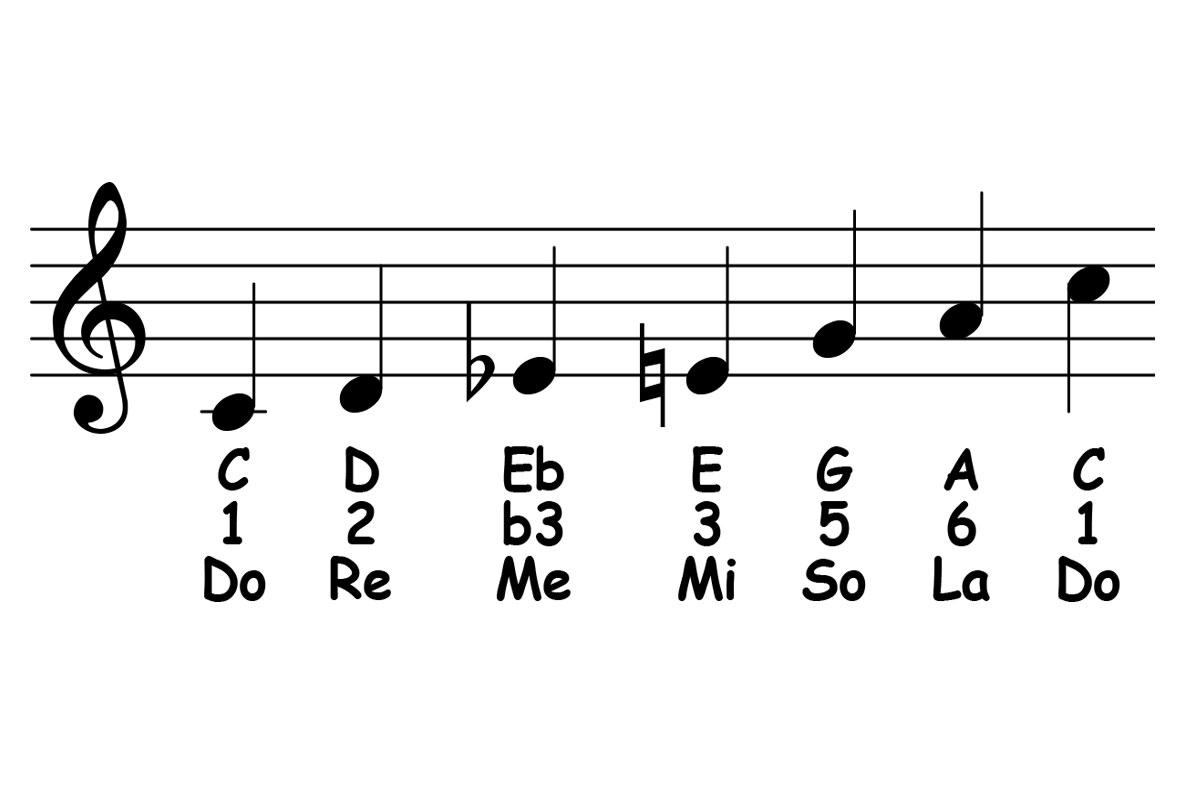The Major Blues Scale is the lesser-known cousin of the minor blues scale. Also known as the Jazz Blues Scale, it has a more majorish, jazzier quality than the minor blues…
C Major Blues Scale…


- The scale structure of the Major Blues Scale is always 1-2-b3-3-5-6-1, no matter what key you are in.
- The Solfege syllables of the Major Blues Scale are always Do-Re-Me-Mi-So-La-Do, no matter what key you are in.
- The only thing that changes when you change keys are the letter names.
The distinctive feature of the Major Blues Scale is the side-by-side usage of E(Mi) and the blue note Eb(Me). The combination of this major-minor sound-feeling is what really makes this scale tick!
Comparative Scale Study
Notice that the C Major Blue Scale uses the same five notes from the C Major Pentatonic Scale but adds the blue note Eb(Me).
Special Note Regarding Notation
You will often see Eb(Me) spelled as D#(Ri) depending on the context and desire to keep the music notation from getting too busy. Do not fret over the names. It’s the sound and physical keys that count. This is a great illustration of the limits of naming things. By the way, Eb(D#) is best thought of and heard as “Mi flat” because it is really defined by its relationship to Mi. As always, don’t get hung up on the names. They are only training wheels that you will abandon as you learn how music works, as your ears develop, and as you learn you way around the keyboard!
Solfege Ear Training
Reading, playing, and singing the Solfege Syllables out loud is an extremely effective way to tune up your ears and to internalize the unique sound-feeling of each note in the scale with respect to the key center Do. Make sure to do this slowly enough for the unique sound-feeling of each Solfege Syllable to make a meaningful impression on your mind’s ear.
C Major Blues Scale: Linear, Ascending…

C Major Blues Scale: Linear, Descending…

C Major Blues Scale: Do-X-Do, Ascending…

C Major Blues Scale: Do-X-Do, Descending…

Note: While it’s possible to continue by singing a bunch of other musical patterns, the 80-20 Principle teaches us that a more efficient approach is to get your ear training material directly from the music that YOU want to play!
learn more…
Mixolydian Scale: Theory & Ear Training

Leave a Reply